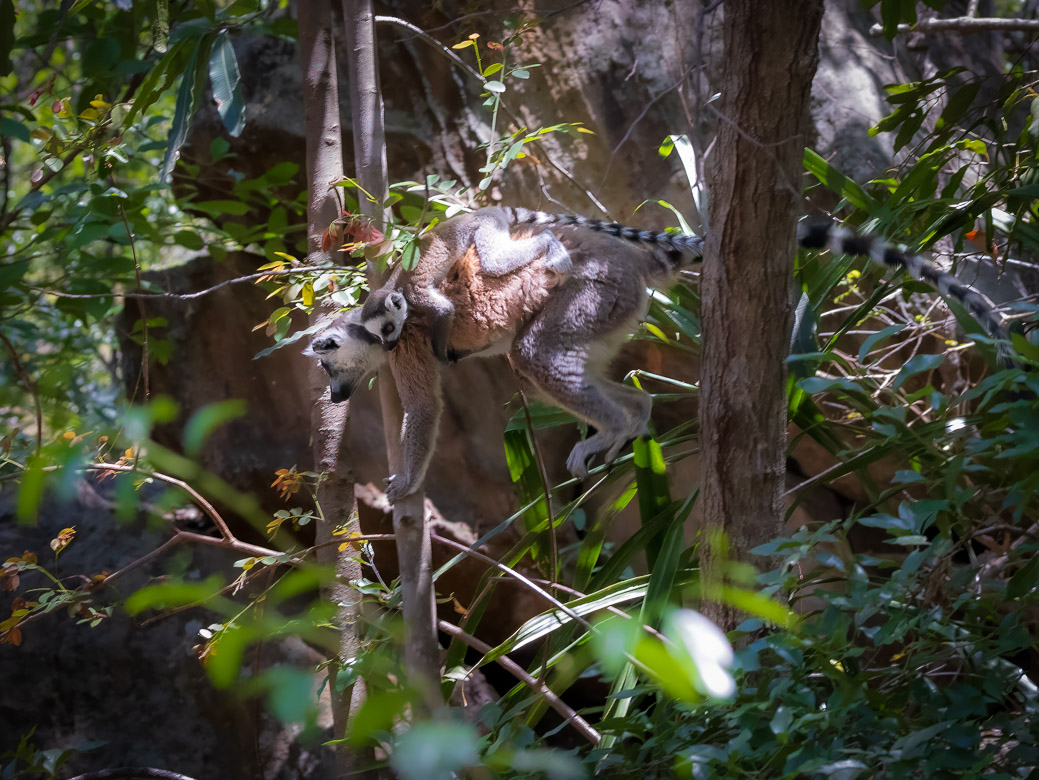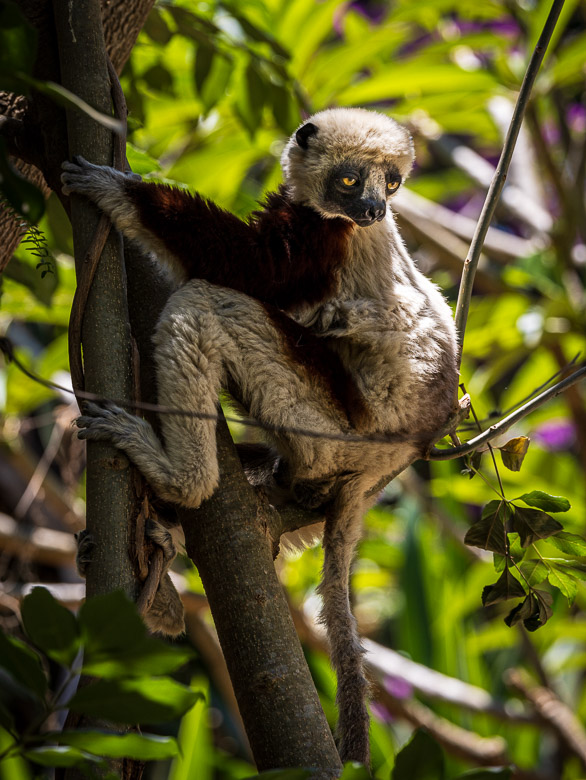
Madagascar is situated around 400 km from mainland Africa. It is the fourth largest island in the world (the largest being Greenland, New Guinea and Borneo) and three times the size of Great Britain. It split up from Africa around 180 million years ago, which has allowed native plants and animals to evolve in relative isolation. It is a biodiversity hotspot and over 90% of its wildlife is endemic to Madagascar. The population is mainly related to those from Indonesia, not to African people.
The animal that Madagascar is famous for is the lemur. They arrived in Madagascar 40-50 million years ago from Africa, long after it has become an island. They probably floated over from mainland Africa on rafts of vegetation, when the distance was smaller, and stronger currents than today carried them across.

The first lemurs appeared in mainland Africa around 60 million years ago. When the first monkeys appeared on the scene around 20 million years ago, Madagascar had moved further east and was isolated from mainland Africa, so there are no monkeys in Madagascar.
In Madagascar the lemurs had no predators. There are no lions, no leopards, no competing large monkeys or apes, no poisonous snakes so the lemurs multiplied and divided into many different subspecies. There are now around 110 different species of lemurs, and more are discovered each year. Between the years 2000 and 2008, 39 new species were discovered and described. Many are local to a certain area of Madagascar.
On mainland Africa the monkeys outperformed the lemurs, and the lemurs are now extinct.






I travelled to Madagascar together with my old school friend, Tore, during 3 weeks in November this year. We visited the capital and another large town (Toliara) but spent most of our time in the countryside. And faithful to my photographic passion, I brought my camera with me nearly everywhere. And I start this series of posts from our Madagascar trip with lemurs climbing in the trees at different places of Madagascar, most of them in the southwest of the country.









